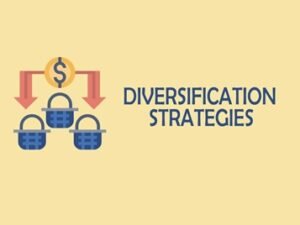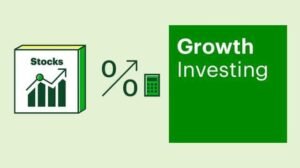Are you ready to discover the keys to investing success? Imagine having the understanding of the stock market and making a portfolio that steadily produces awesome returns. Whether you’re just a beginning or seasoned investor, it’s very important to master portfolio management for financial success.
In this complete guide, we’ll explore proven strategies and expert’s tips to help you build and manage a winning stock portfolio. Don’t miss this chance to change your investment strategy and reach your money goals.
Understand the Basics
Before examining the details of building a stock portfolio, let’s explore the important ideas of stock investing.
What’s a stock?

A stock indicates a partial ownership in a business. When you purchase a stock, you’re buying a small piece of that company and becoming a shareholder.
How the stock market works
The stock market is a platform that allows buyers and sellers to trade stocks. Prices change on the basis of supply and demand. These changes are influenced by factors such as investor outlook, economy and performance.
Types of stocks
Stocks have different types and each type have significant features:
- Common stocks: Represent basic ownership in a firm. Common shareholders usually have voting rights but lowest claim on assets if bankruptcy.
- Preferred stocks: Give fixed dividends and higher asset claims than common stocks. But generally they have no voting rights.
- Growth stocks: Companies with growth stocks are expected to grow faster than the overall market. They usually invest their profits again and again and don’t pay dividends.
- Value stocks: These stocks are seen as undervalued relative to their fundamentals. Investors hope the market will recognize their true value.
- Dividend stocks: These stocks are given by companies to distribute dividend yield to shareholders. Generally, income seeker investors prefer these stocks.
Interpreting these basics is very important when building a portfolio. Each stock plays a different role in your strategy and to balance risk and returns.
Setting Investment Goals
Before building a stock portfolio, it’s very important to define clear investment goals. This step directs your choices and keeps you focused on your financial future.
Defining your financial objectives
Start by asking what you want to get. Are you saving for retirement, a house down payment, or your kid’s education? Your aims will shape your plan and help pick the right stock mix for your portfolio.
Assessing your risk tolerance
Take into consideration how much risk you can handle. Can you sleep if your investments fall 20%? Your tolerance impacts the stocks you select and how you balance your portfolio. Keep in mind, higher profits usually have higher risks.
Determining your investment timeline
Consider when you’ll need the money. A longer time period generally requires you to invest aggressively. While shorter time periods may need a conservative strategy. Your investment horizon plays a major role to manage your stocks in a better way.
Building Your Portfolio

Building a stock portfolio needs a thoughtful strategy for asset allocation, diversification and stock picking. This section will guide you through key steps to make a balanced and effective portfolio.
Asset Allocation
Asset allocation is a procedure that divides your investments among various asset classes like cash, bonds and stocks. This technique balances risk and profit for your financial goals and risk tolerance.
Stocks vs. Bonds vs. Cash
- Stocks – These show ownership in a company. They provide potential for high profits. But they have higher risk rates than other assets. These are best for long-term growth.
- Bonds – They are loans to governments or companies paying regular interest. Generally, bonds are safer than stocks. They give steady income.
- Cash – Cash involves cash equals like market funds and saving accounts. They have minimum risk rates but also least profits. These offer stability and liquidity in your portfolio.
Domestic vs. International Stocks
Investing in both international and domestic stocks increases diversification. Domestic stocks may be more familiar and have less currency risk. International stocks give exposure to global opportunities and can hedge against domestic downturns.
For example, investing in growing markets may give a higher growth probability. On the other side, developed markets offer more stability.
Diversification Strategies

Diversification has a very important role in building a stock portfolio. It spreads risk across different sectors and investments.
Across Sectors
Investing in different industries like finance, healthcare and technology decreases the effect of a downturn if one sector struggles. It provides growth opportunities in different economic areas.
For example, technology might boom while healthcare provides stability.
Across Company Sizes
Including stocks from companies of different sizes such as large capital, mid capital and small-capital also increases diversification.
Small caps usually have higher growth potential. Large caps tend to be more stable with dividends. Mid caps provide a balance between stability and growth.
Geographical Diversification
Investing in various geographical areas protects against local changes. It benefits from growth in developing markets and maintains stability with investments in developed countries.
For example, if the U.S. market underperforms, investments in Asia or Europe can give positive earnings.
Choosing Individual Stocks
Selecting the right stocks needs complete research and analysis. The factors used in stock selection are given below:
Fundamental Analysis
Analyze financial health by valuing cash flow, balance sheets and income statements. Major tools involve return on equity, price-to-earnings ratio and earnings per share.
For example, a company with high ROE and low P/E might be undervalued, signaling a potential opportunity.
Technical Analysis
Technical analysis values trends and price patterns in the stock exchange. By reviewing charts and utilizing indicators such as relative strength index (RSI) and moving averages, investors can find potential buy and sell opportunities. This strategy helps to time the market and make short-term investment decisions.
Company Research
It’s very important to know the management team, competitive position and a firm’s business plan. Find out companies with a competitive edge in their industry, a clear growth plan and strong leadership.
For example, a company with a significant product line and a strong market presence indicates a good investment choice.
Using Mutual Funds and ETFs

Mixed funds like ETFs and mutual funds allow diverse investment without picking individual stocks. They combine cash from various investors to purchase wide asset mixes and provide professional management and immediate diversification.
ETFs are generally cheaper and are traded such as stocks and provide liquidity and flexibility.
Dollar-Cost Averaging
Dollar-cost averaging means putting the same fixed sum at regular intervals, irrespective of market conditions. This technique decreases market volatility impact and eliminates market’s timing needs. It also allows you to steadily build your portfolio over time.
For example, monthly $100 investments in mutual fund buys can average out costs of shares over time. These also reduce market change effects.
Portfolio Management Strategies
Effectively managing a stock portfolio needs a well-planned approach. Let’s look at some popular approaches to help make the right choices.
Buy and Hold
This strategy includes buying stocks and keeping them long-term. Short-term market ups and downs can’t affect it. It’s based on the belief that good companies will grow over time.
For example, buying Amazon shares in 2000 and holding would have seen big gains by now.
Value Investing
Value investors look for underpriced stocks. They search for companies with strong basics trading below true value.
Warren Buffett is a popular value investor. He finds good companies at fair prices such as when he bought Coca-Cola stock in the 1980s.
Growth Investing

Growth investors target companies that are expected to grow faster than average. They’ll pay higher prices for stocks with strong growth potential.
For example, investing early in Tesla would have been a growth play and betting on electric cars’ future.
Income Investing
This technique aims to generate regular income from investments. Income investors usually select dividend-paying stocks. For example, companies such as utility and real estate investment trusts (REITs) are popular among income investors for their steady dividends.
Momentum Investing
Momentum investors purchase stocks already rising. They believe that these stocks will keep going up. They identify trends in trading volumes and stock prices.
For example, a momentum investor may have bought Netflix stock as its price kept increasing in the 2010s.
Tools and Resources for Portfolio Management
Managing a stock portfolio properly needs the right resources and tools. Let’s explore some major tools that allow you to make right decisions.
Stock Screening Tools

Stock screeners allow you find stocks matching specific criteria. They’re like search engines for stocks. You can filter stocks by elements such as financial ratios, sector or price.
For example, you might utilize a screener to identify stocks with high dividend yields and low debt. Well-known screeners involve Yahoo Finance and Finviz. These tools save time and uncover possible investments.
Portfolio Tracking Software
Monitoring your holdings is very important when building a stock portfolio. Portfolio tracking software assists you observe your stocks’ performance in real-time. These tools show your investments’ worth and changes.
Some popular options are Morningstar and Personal Capital. They can also indicate if your portfolio is aligned with your investment aims and balanced.
Financial News and Analysis Websites
It’s very important to stay informed to make good investment choices. Financial news sites give current information on companies, economic trends and markets.
Bloomberg, Wall Street Journal and CNBC are trusted sources. These sites provide analysis, expert opinions and news to shape your investment strategy. Many have basic charts and free stock quotes.
Brokerage Platforms

Brokerages are where you buy and sell stocks. They now provide more than just trading. Many give educational stuff, portfolio analysis and research tools.
Well-known platforms such as Charles Schwab, TD Ameritrade and Fidelity, Charles Schwab, TD Ameritrade give these services. Some even have practice accounts to try trading without real money risks.
These tools can be utilized to streamline a process which manages your stock portfolio. They give useful insights for better investing decisions.
Monitoring and Rebalancing Your Portfolio
Managing a stock portfolio needs regular adjustments and attention to stay on track with your investment goals.
Main steps to monitor and rebalance a stock portfolio are given as:
Regular Portfolio Review
Regularly, check the portfolio at least every 3-6 months. See how each stock is doing and if it still fits your investment strategy.
Are your top stocks still performing well? Have any fallen behind? This review helps to find issues early and make right investment decisions.
When and How to Rebalance
Over time, some investments can grow faster than others. This throws off your planned split of assets. Rebalancing means adjusting your portfolio back to your original targets.
For example, if you wanted 60% stocks and 40% bonds but stocks grew to 70%, you’d sell some stocks and use the money to buy more bonds to get back to 60/40.
Consider rebalancing when:
- Your asset split is off by 5% or more
- You’ve had a significant life change
- It’s been a year since you last rebalanced
You can rebalance by selling assets that grew too much and buying underweight ones or invest new money into areas below your targets.
Tax Considerations in Rebalancing

Rebalancing can apply taxes if you sell investments for a profit in regular taxable accounts. To reduce tax impact:
- Look at tax-loss harvesting to offset gains
- Rebalance retirement accounts such as IRAs first
- Use new money to buy underweight assets
Remember, rebalancing aims to control risk and keep your investments aligned with your goals. It’s important for building and managing a winning portfolio.
Risk Management
When building a stock portfolio, it’s vital to control and understand risk. Let’s look at different risk types and protection methods for your investments.
Understanding Different Types of Risk
Investments in stocks incorporate some risks:
- Market Risk – Affects all stocks such as prices fall in a recession.
- Company Risk – This is specific to one firm like a scandal hurting its stock.
- Sector Risk – Sector risk impacts a whole industry. For example new regulations on oil companies.
- Currency Risk – This affects investments in for foreign stocks. Generally, changes in exchange rate affect your profit.
Hedging Tactics
Hedging is like purchasing insurance for your portfolio. Here are some ways to do it:
- Diversifying – Don’t put all your eggs in one basket. Allocate your investments across different countries and sectors.
- Inverse ETFs – These move opposite the market. If stocks fall, these ETFs rise to balance the losses.
- Bonds – Adding bonds to your portfolio can give stability when stocks are volatile.
Stop-Loss Orders

A stop-loss order is an instruction to sell a stock if it drops to a set price. For example, you might set a stop-loss 10% below purchase price. This limits potential losses on any single stock.
Using Options for Protection
Options are contracts that give you the right to buy or sell a stock at a set price. They can protect your portfolio:
- Put Options – Increase in value when stock prices fall. They’re as insurance for your stocks.
- Covered Calls – Selling call options on your owned stocks allow you to earn income and avoid small losses.
To control risk is an ongoing part of managing your stock portfolio. Understanding these strategies helps better protect investments and eases worries. Always consider risk tolerance and goals when selecting strategies.
Advanced Portfolio Strategies
As you get more comfortable to manage a stock portfolio, you may want to try some advanced strategies. These can help refine your investments and potentially increase returns.
Factor Investing
Factor investing targets certain attributes that influence stock performance. Common factors are:
- Value: Undervalued stocks
- Growth: High growth potential companies
- Size: Small-cap vs large-cap stocks
- Momentum: Stocks doing well recently
For example, you might invest more in small-cap value stocks if you think they’ll outperform the market.
Sector Rotation
This strategy involves moving your money between sectors on the basis of the economic cycle. For example:
- You must invest more in consumer discretionary and technology during growth.
- In a recession, You might change to consumer staples and utilities in a recession.
The goal is to be in the right sectors at the right time.
Thematic Investing

Thematic investing means you might focus on big trends that could shape the future like:
- Clean energy
- Artificial intelligence
- Aging population
For instance, if you believe electric cars are the future, you must invest in companies related to this theme.
Socially Responsible Investing (ESG)
ESG investing includes Environmental, Social and Governance factors. This method aims to make profits while supporting companies that:
- Care about the environment
- Treat employees well
- Have good leadership
For example, you may invest in firms with diverse leadership teams or strong environmental policies.
Common Mistakes to Avoid

When building a stock portfolio it’s important to know common mistakes that can hurt your success. Here are some key errors to watch for:
| Mistake | Description | How to Avoid |
| Overtrading | Buying and selling stocks too frequently, leading to high fees and potential losses | Stick to a long-term investment strategy; avoid trying to time the market |
| Chasing Performance | Investing in stocks solely based on recent high returns | Focus on companies with strong fundamentals and growth potential, not just past performance |
| Neglecting Diversification | Putting too much money in a single stock or sector | Spread investments across different industries, company sizes, and geographical regions |
| Emotional Decision-Making | Making investment choices based on fear or greed | Develop a solid investment plan and stick to it, even during market volatility |
Additional Mistakes to Avoid:
Some additional mistakes to avoid includes:
- Ignoring Fees – Don’t overlook management charges and transaction fees. These can reduce your returns over time. Compare fees with different investment options and brokers.
- Failing to Rebalance – You mustn’t allow your portfolio drift from target allocations; it can raise risk. Review and rebalance your portfolio at least yearly.
- Not Doing Your Homework – Investing without studying companies and trends can lead to poor choices. Always research industry trends and company’s financials before investing.
- Trying to Beat the Market – Trying to constantly beat the market brings unnecessary risk. Incorporate index funds in your portfolio to give steady and market-matching returns.
By avoiding these errors, you can invest better. Patience, discipline and a sound strategy are important. Stay informed, keep learning and get professional advice when needed.
Measuring Portfolio Performance
When managing a stock portfolio, tracking stock performance is very important. Here are key ways to measure your portfolio’s performance:
Key Performance Metrics

- Total Return – This shows overall growth of your investments involving dividends and price changes. For example,10% total return means a $1,000 investment has grown to $1,100.
- Annualized Return – Helps compare your investments over different times. It shows the annual return if staying the same each year.
Benchmarking Against Indexes
Measure your portfolio against relevant market indexes such as the S&P 500 for U.S. stocks. It helps to determine if you’re doing better or worse than the overall market.
Adjusting for Risk (Risk-Adjusted Returns)
Examine the risks you’re taking to get returns. Sharpe ratio compares returns to risk-free rate and accounting for volatility.
Tax Considerations
Taxes affect investments. So, it’s important to understand the tax considerations.
Some major tax considerations are:
Capital Gains Taxes
Selling stock for more than you paid owes capital gains tax. The rate depends how long you kept the stock:
- Short-term (under 1 year): Taxed as regular income
- Long-term (over 1 year): Lower rate and usually 15% for most people
Tax-Loss Harvesting
This technique means selling losing stocks to counter gains from winning stocks. For example, if you make $1,000 on one stock but lose $1,000 on another, you can sell both to zero out the tax.
Tax-Efficient Investing Strategies
Here are some ways to decrease the taxes when building a stock portfolio:
- Keep stocks over a year to get lower long-term capital gains rates
- Use tax-free accounts such as 401(k)s or IRAs
- Invest in index funds which generally have less turnover and fewer taxable events
- Think about municipal bonds that are usually tax-free at the federal level
While taxes matter, they shouldn’t be the only factor in your investment decisions. Always talk to a tax professional for personalized advice.
Adapting Your Portfolio Over Time
Managing a portfolio isn’t a one-time thing. As life changes, so should your investment strategy. Let’s explore how to adapt your portfolio over time.
Life Stage Investing

Your age and stage play a big role in how to invest:
- Young Adults – When young, you take more risks. Maybe 80-90% in your stock portfolio is for growth.
- Middle Age – Get older, you want to reduce risk. You shift to 60-70% stocks and more bonds.
- Near Retirement – Safety becomes more important when you’re close to retirement. Only 40-50% in stocks.
Adjusting for Major Life Events
Big life events can affect your financial needs:
- Getting Married – You might need to combine money and adjust your investment aims.
- Having Children – Could start saving for college or get more life insurance.
- Buying a Home – Less money to invest temporarily.
When these events happen, review your portfolio and adjust it if required.
Preparing for Retirement

As you approaching to your retirement, focus changes from growing money to save it:
- Begin moving more cash into safer investments such as bonds.
- Consider dividend paying stocks for steady income.
- Plan how to turn your investments into regular income.
To Sum Up
Building and managing a winning stock portfolio is a process that needs regular learning, patience and knowledge. By interpreting the fundamentals, setting clear goals and using smart techniques, you can make a portfolio fitting your money objectives. Remember to diversify, check performance and adjust strategy as your life changes.
Now that you’ve learned portfolio management basics, take the next step. Discover how to build a diversified portfolio from nothing by reading our full guide on “Building a Diversified Stock Portfolio from Scratch” It’s the ideal companion that provides practical steps to start out.


